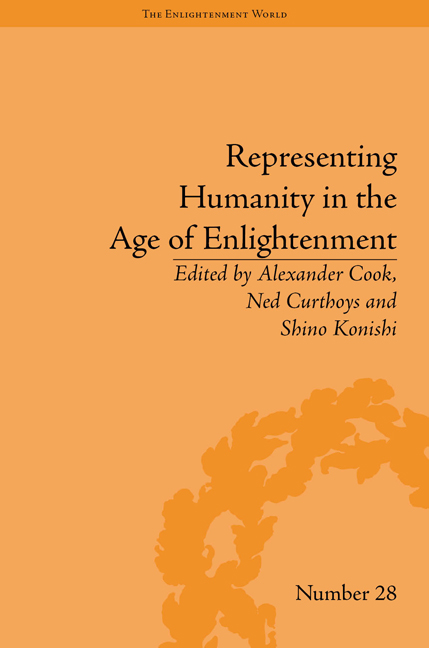Book contents
- Frontmatter
- CONTENTS
- Acknowledgements
- Dedication
- List of Contributors
- List of Figures
- The Science and Politics of Humanity in the Eighteenth Century: An Introduction
- Part I Humanity and the Civilizing Process
- Part II Encountering Humanity
- 6 Songs from the Edge of the World: Enlightenment Perceptions of Khoikhoi and Bushmen Music
- 7 Joshua Reynolds and the Problem of Human Difference
- 8 François Péron's Meditation on Death, Humanity and Savage Society
- 9 Neither Civilized Nor Savage: The Aborigines of Colonial Port Jackson, Through French Eyes, 1802
- 10 The Difficulty of becoming a Civilized Human: Orientalism, Gender and Sociability in Montesquieu's Persian Letters
- Part III The Limits of Humanity
- Notes
- Index
8 - François Péron's Meditation on Death, Humanity and Savage Society
from Part II - Encountering Humanity
- Frontmatter
- CONTENTS
- Acknowledgements
- Dedication
- List of Contributors
- List of Figures
- The Science and Politics of Humanity in the Eighteenth Century: An Introduction
- Part I Humanity and the Civilizing Process
- Part II Encountering Humanity
- 6 Songs from the Edge of the World: Enlightenment Perceptions of Khoikhoi and Bushmen Music
- 7 Joshua Reynolds and the Problem of Human Difference
- 8 François Péron's Meditation on Death, Humanity and Savage Society
- 9 Neither Civilized Nor Savage: The Aborigines of Colonial Port Jackson, Through French Eyes, 1802
- 10 The Difficulty of becoming a Civilized Human: Orientalism, Gender and Sociability in Montesquieu's Persian Letters
- Part III The Limits of Humanity
- Notes
- Index
Summary
Between 1800 and 1804 the French maritime expedition led by Nicolas Baudin undertook a scientific study of the southern lands, more specifically, New Holland and Van Diemen's Land, as the Australian mainland and Tasmania were then known, and Timor, the easternmost island in the Sunda Islands archipelago to Australia's north. This expedition was the most ambitious scientific voyage of its day, lavishly funded by the French government. Its two ships, the Géographe and the Naturaliste, were manned by twenty-two scientists including astronomers, botanists, geographers, mineralogists and zoologists, although the expedition's scientific capacity was even greater, with many of its thirty-two officers, and even some of the 184 seamen, also possessing some scientific knowledge or appropriate skills. The Baudin expedition was charged with the mission to investigate all aspects of the natural world, from mapping the coastlines of the then incompletely charted southern landmass to examining the antipodean flora and fauna. More significantly its natural history remit also included the nascent study of anthropology.
The newly formed Société des Observateurs de l'Homme issued a number of instructive memoires to the expedition, including, Joseph-Marie Degérando's Considerations on the Various Methods to Follow in the Observation of Savage Peoples and Georges Cuvier's Instructive Note on the Researches to be Carried Out Relative to Anatomical Differences between the Diverse Races of Man.
- Type
- Chapter
- Information
- Representing Humanity in the Age of Enlightenment , pp. 109 - 122Publisher: Pickering & ChattoFirst published in: 2014



